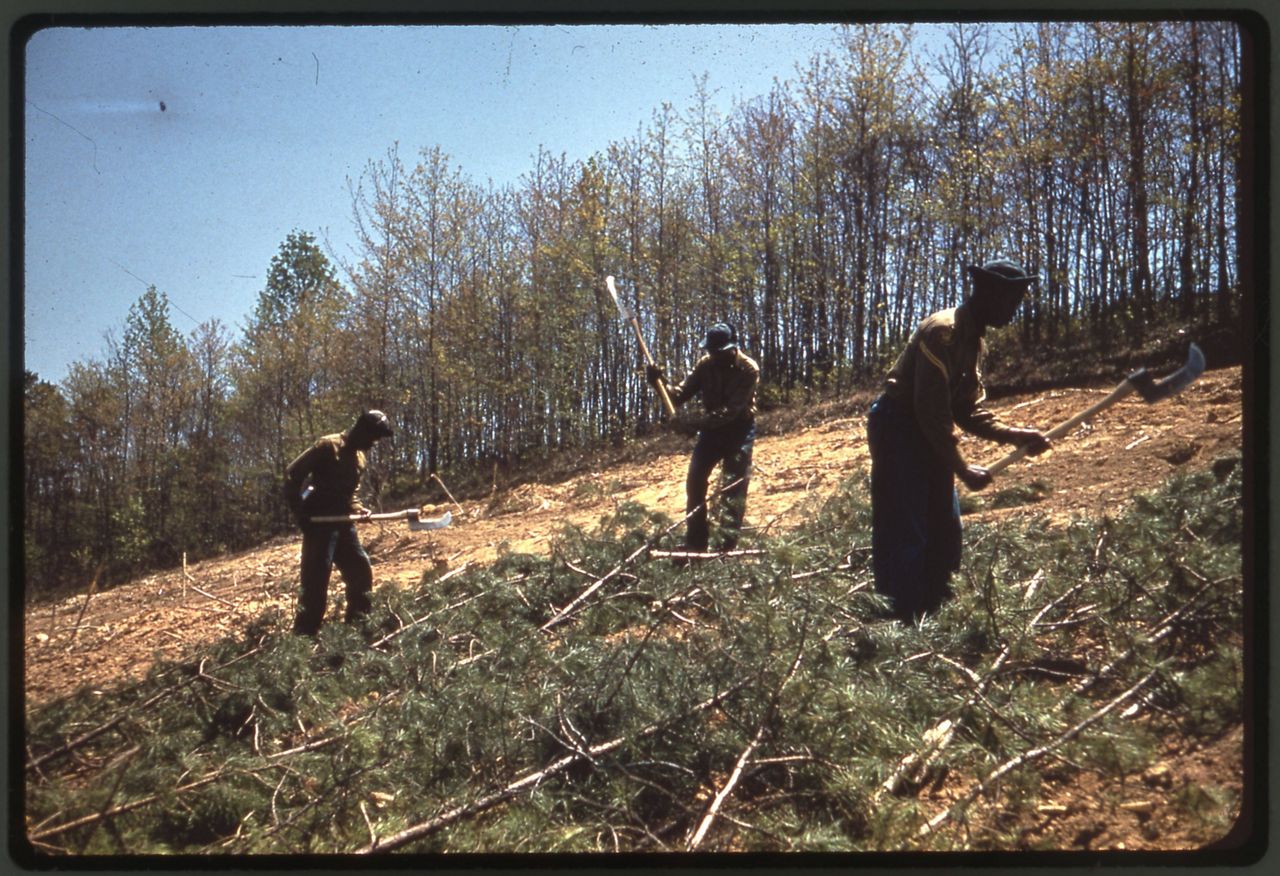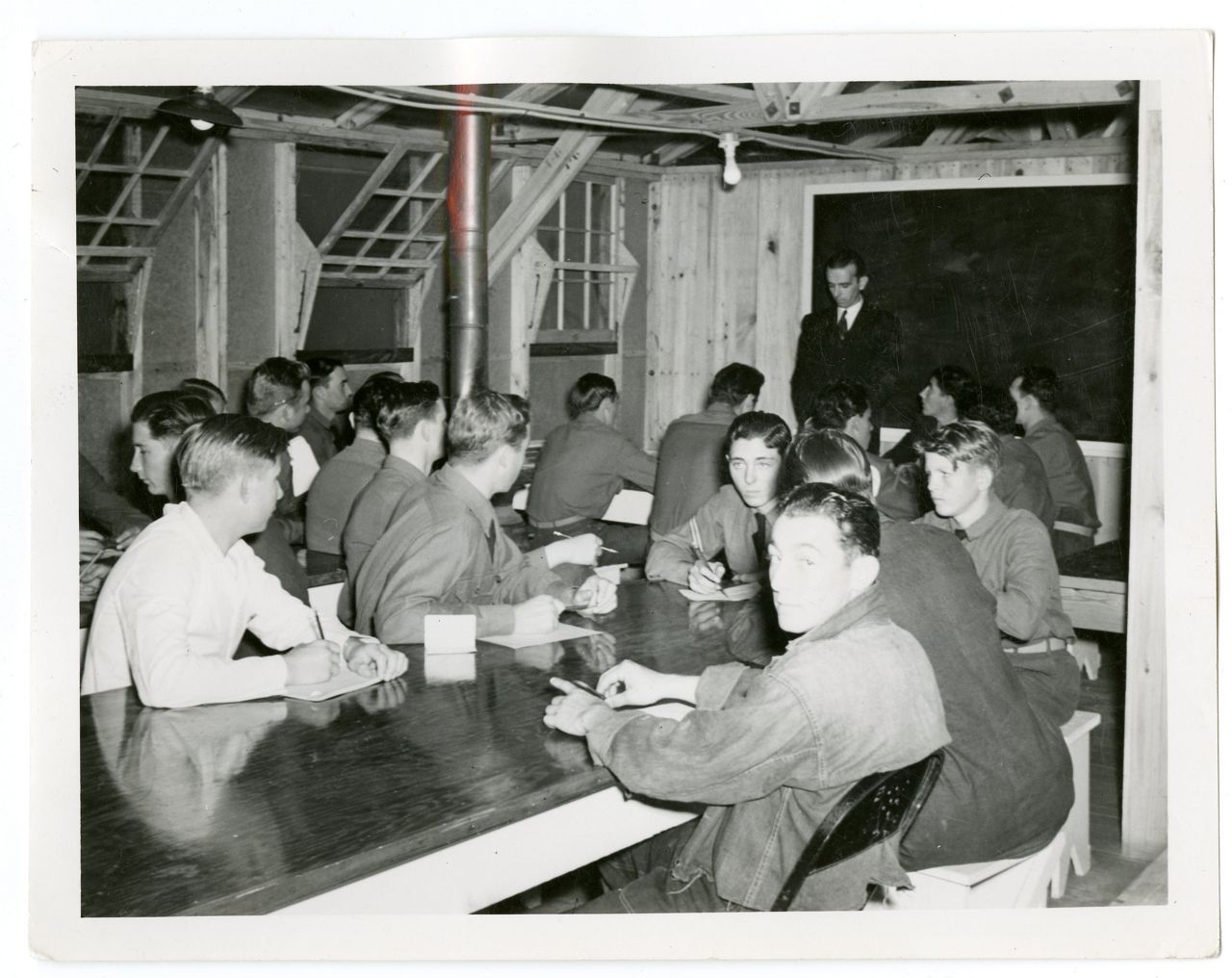It’s called “Migrant Mother,” a picture taken in 1936 of a destitute mother and her children inside a failed pea farm in Nipomo, California. It became the most iconic image of the Great Depression, speaking to the many Americans impoverished by economic and environmental collapse.
Then-President Franklin Delano Roosevelt launched many programs to alleviate the destitution of the era. One of them, as he put it, would kill two birds with one stone: The Civilian Conservation Corps (CCC). Between 1933 and 1942, it put more than three million people to work outdoors — reversing erosion, building roads and tending to public spaces.
“He put people to work to give them jobs to help solve the economic crisis. But he put them to work, conserving natural resources to simultaneously try to solve this environmental crisis,” said Neil Maher, a historian at the New Jersey Institute of Technology and author of a book on the CCC.
The CCC would create more of the era’s indelible images — shirtless young men with shovels and axes.

They are scenes Democrats in Congress hope to recreate for a new era. A roughly $2 trillion “Build Back Better” bill that narrowly passed the House of Representatives in November includes $15 billion to hire 300,000 to 400,000 people for a reimagined version of Roosevelt’s corps.
This “Civilian Climate Corps” would work in reforestation, tree planting and other measures to arrest the effects of climate change.
One of its champions is Democrat Rep. Joe Neguse, whose Colorado district was hit last year by two of the state’s largest wildfires in history.
“That was a wakeup call to many, including policymakers, that recognized the need on the front end to invest the dollars necessary to build out resiliency into the system,” he said in an interview with Spectrum News.
As envisioned, the new CCC wouldn’t work solely in rural areas, as the old program did. New members would tend to urban areas that often experience increased heat and air pollution.
“There really needs to be an environmental justice approach to the new climate corps, and President Biden is very much aware of that, and it's built into this bill,” Maher said.
The old CCC was also all-male and segregated — something advocates today pointedly say will be different.
While there may be a pressing environmental need, the economic circumstances today are far different than those in the grips of the Great Depression. In 1933, the unemployment rate peaked at 24.9 percent; the most recent jobs report for November 2021 has the current unemployment rate at 4.2%.
No Republican is expected to support Build Back Better. Its fate even among all Democrats is uncertain. Because the Senate is split 50-50, with vice president Kamala Harris acting as the tie-breaking vote, if no Republicans join the measure, no Democrat can defect.
Rep. Bruce Westerman, R-Ark., the ranking member of the House Committee on Natural Resources, whose grandfather was in the original CCC, canceled an interview with Spectrum News. But he has publicly criticized the new CCC for potentially competing with the private sector for workers.
“It’s unfathomable to me that at a time when businesses around the nation are still struggling to fill jobs, we would make it even more difficult for them by pumping billions of dollars into a new federal program,” he said at a recent hearing.
Advocates say apart from its environmental benefits, a new CCC could replicate the nation-building of its forerunner.

“In the 1930s, these young men joined the corps, and many of them were immigrants — working class immigrants. They were German-Americans or Irish-Americans or Polish-Americans,” said Maher. “Part of the CCC's branding was that these young hyphenated Americans became full blooded American men by working out in nature. It was an Americanization process.”
Added Neguse: “I've always found that America is at its best when we are working together collaboratively to address a common challenge.”
Spectrum News' Rachel Tillman contributed to this report.



